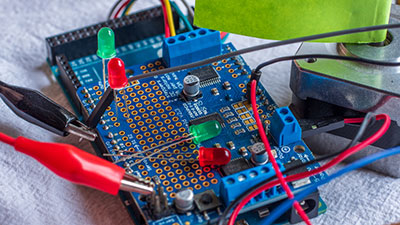Contents
- 1 What Is A Motor Controller?
- 2 Types of Motor Controller
- 3 How Does A Motor Controller Work?
- 4 Motor Controller Selection Criterion
- 5 Brushless DC Motor Controllers VS Brushed DC Motor Controller
- 6 The Difference Between A Motor Driver and A Motor Controller?
- 7 Variable Speed Controller
- 8 Different Voltages of The Motor Speed Controller
- 9 Motor Starters
- 10 More About Motor Controllers
- 11 Motor Controller Applications
- 12 Conclusion
What Is A Motor Controller?
A motor controller refers to an electric device that regulates the torque, motor speed, and equipment output. Motor controllers generally come with either manual or automatic means of stopping or starting the motor.
What makes motor controllers so essential? Well, without these devices, the motor does not have the necessary protection from overloads. An overload can lead to electrical faults that could potentially damage electronic equipment.
Most motors require at least several Amps to operate well. Unfortunately, microcontrollers can only provide about 0.1 Amps, which is too little. A motor controller can help you to achieve the necessary number of Amps.
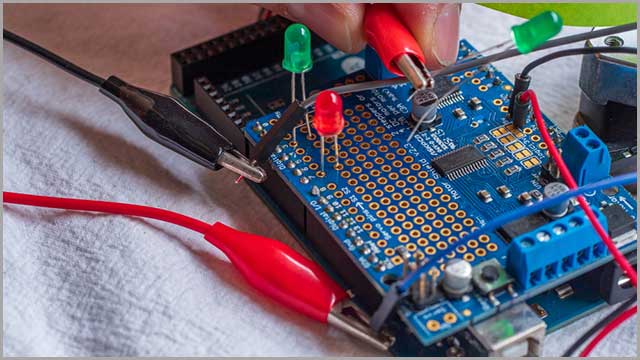
Types of Motor Controller
There are four main types of motor controllers. Let us take a closer look at each of them.
2.1 AC Motor Controllers
AC motor controllers modify the input power to motors. They achieve this by adjusting the frequency of the energy getting into the engine. The objective of that is to regulate the speed and torque. Other names for AC controllers include AC inverters, variable speed drivers, and adjustable frequency drives.
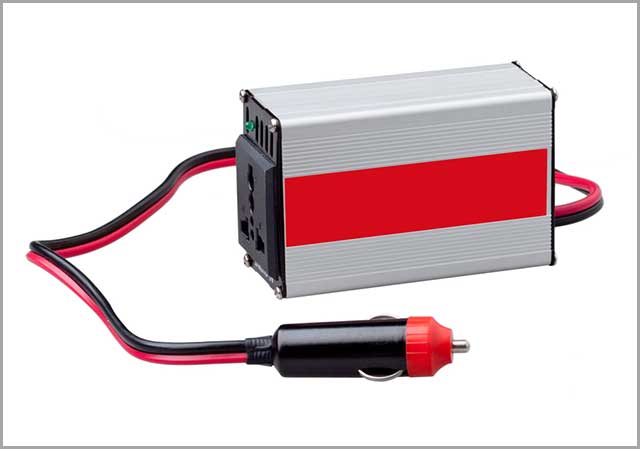
2.2 DC Motor Controller
Just like AC motor controllers, DC motor controllers also adjust input power. DC motor controllers change or alter the current source to direct output of current or frequency. A DC motor controller efficiently controls the torque and speed of the motor.
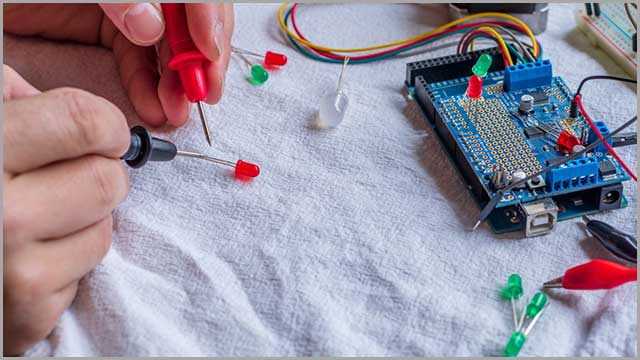
2.3 Servo Motor Controller
A servo motor controller refers to an electronic device that modifies the input power by adjusting or regulating the current source to the desired frequency, pulsed, or current output. Like AC and DC motor controllers, servo moto controllers are ideal for specific applications. A servo motor controller is suitable for motion control applications, especially in the manufacturing and construction industries. These controllers control positions, torques, and motor speeds.
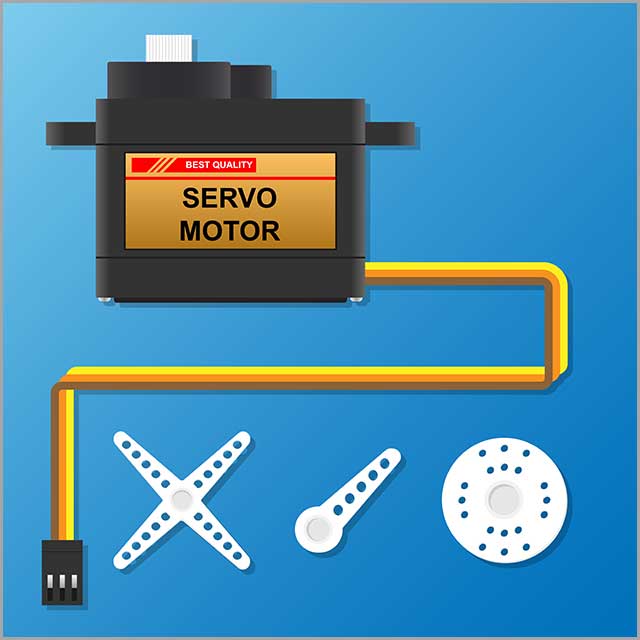
2.4 Stepper Motor Controllers
A stepper motor controller is an electronic device that controls the input power. The controller does so by adjusting the current source to a stepped current output. Stepper motor controllers are especially ideal in manufacturing and construction environments. Like other controllers in this list, stepper motor controllers control the position, torque, and motors’ speed. Another name for stepper motor controllers is motor indexers.
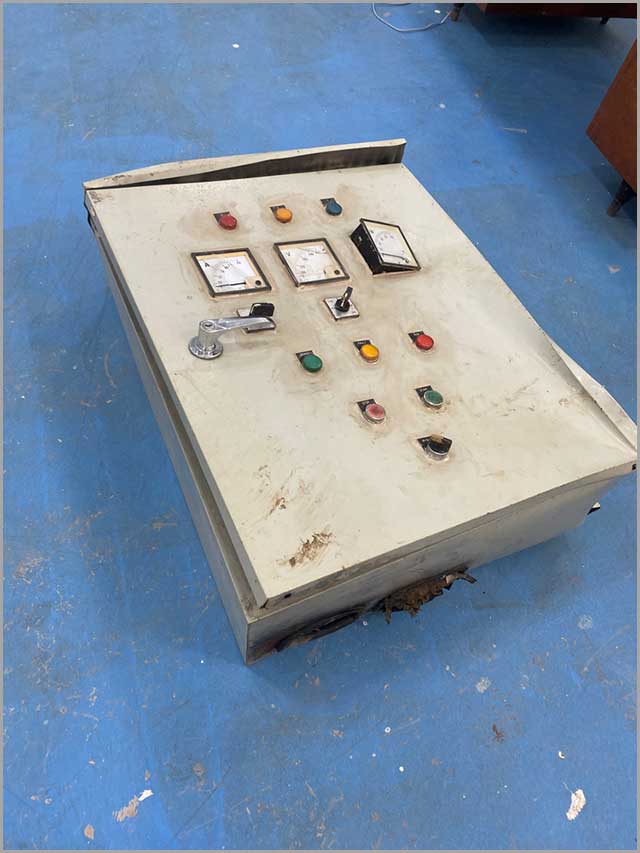
How Does A Motor Controller Work?
Most beginner designers and engineers don’t understand how motor controllers work. Interestingly, it’s a lot easier than you may think. Let’s look at the subject in depth.
3.1 Direction Controller Through H Bridge
This DC motor control process is among the most straightforward. The process involves two pairs of switches. Every time you connect a couple of buttons, the circuit is complete and generates power.
To make a 4-sectional motor, you can mix and match the switches or change their polarities. Users can also change the size of H bridges to make them fit smaller systems.

3.2 Speed Controller Through Pulse Width Modulation (PWM)
PWM circuits control the motor’s velocity by either booting or limiting the voltage of the PCB supply. These circuits have a smoothing effect through coil induction. It’s possible to combine PWM circuits with H bridges when you want to change velocity, direction, or braking.

3.3 Armature Controller Through Variable Resistance
Another way to change DC motor speed entails changing the currency that runs through the coil or the armature. Shaft speed can vary depending on the current supply. That’s because it’s proportional to the magnetic field generated by the current present in the armature.
Consider adding resistors to the armature if you’d like to limit motor speed. To bump up the pace, add a stator resistance.
Adding resistors to the armature coil means that you’re generating more heat and losing energy. That’s why this method can be inefficient.

3.4 Turning Off the Motor
To turn off the motor, simply cut off the voltage supply to the PCB. You could also open the switches in the motor. You can open a switch connected to two.
3.5 Motor Braking
When it comes to motor braking, you can adopt one of three methods. The first is dynamic braking. This method involves cutting off the power supply from the motor.
The second type of braking is known as injection braking. This method only applies to AC motor control. After disconnecting power and supplying DC power; instead, you create a magnetic field that either slows down or stops the motor by changing the direction the motor rotates.
There’s also regenerative braking that operates in the same manner as dynamic braking. You cut off the power source and then send back to the supply via the rotating motor. Regenerative braking can charge the battery. The battery will then supply current to the engine.

Motor Controller Selection Criterion
What criterion should you use when selecting motor controllers? We discuss two in this section.
4.1 Electrical Specification
When it comes to electrical specification, some of the issues you want to pay attention to include:
Maximum Output Voltage
The output of the device in question should always comply with the entire system’s output.
Rated Power
The highest power that the motor can use.
AC/DC Supply Voltage
AC/DC supply voltage aims at achieving flawless operation.
Continuous Output Current
Usually, the device carries current without surpassing heat limitations.
Bus Types
You’ve probably heard about bus types, which consist of cutting-edge technology attachment.
Single Phase/ Three Phase Inputs
Generally, one can use low pressure or high-pressure applications.
Motor Controller Frequency
Motor controllers usually use frequencies ranging from 50 Hz to 400 Hz.

4.2 Operating Specification
The performance of motor controllers depends on the control system and design setup. One can add different types of manual controls, such as knobs, jumpers, potentiometers, etc. Alternatively, one can use computer controls like a joystick, a digital pane, and so on.
4.3 Features
A motor controller’s choice is flexible and depends on the functions you’d like to include in it. Different motor controllers have additional features. For instance, you can opt for the soft-start feature, which lets you decide your device’s amount of time to power up.
Brushless DC Motor Controllers VS Brushed DC Motor Controller
There are two main types of DC motors: brushed and brushless. Brushed DC motor controllers are among the oldest kinds of motor controller. Rectifying brush motors is generally carried out internally by the DC power supply. The controller features a rotor, some brushes, and an axle. The polarity and charge of these brushes determine the motor’s speed and direction.
Brushless DC motor controllers have become wildly popular mainly because of their efficiency. These motor controllers have the same appearance as brushed motor controllers but without the brushes. The motors also feature specialized circuitry that controls direction and speed. We need to improve efficiency, brushless motors fitted around the rotor magnet.

The Difference Between A Motor Driver and A Motor Controller?
You need to control any electronics that contain wheels or other motorized parts from the microcontroller. As we pointed out earlier, standard chips can only output small amounts of current. Hence you cannot efficiently drive motors directly, regardless of their size. That’s where motor drivers come in.
Motor drivers use larger chips to handle greater current levels and higher voltages than the microcontroller’s usual 5V/3.3V. With a motor driver, you can control a more massive load.
So, how does a motor driver differ from a motor controller? Well, motor drivers simply handle the ability to drive the motors. On the other hand, motor controllers have all the logic circuitry built within them. You can control motor controllers using a higher-level interface, e.g., A PWM signal, analog input, USB, etc.

Variable Speed Controller
Is variable speed drives
The adjustable speed drives
Microdrives
AC drives
Inverters

7.1 Variable Speed Controller for AC Motor
As we hinted earlier, AC variable speed controllers work by alternating electric motors’ voltage and frequency. These frequency drives have many applications, including conveyor belts, swimming pool pumps, lathes, mills, air compressors, HVAC fans, etc. AC speed controllers are highly energy-efficient, unlike DC motor frequency control systems. It’s no wonder that many designers now opt to retrofit DC speed controllers with AC options.
Different Voltages of The Motor Speed Controller
Motor speed controllers are available in different voltage options, including 12V, 24V, and 90V. While all three have many similarities, there are also apparent differences. Overall, all three design features are almost the same way. The main difference is that a 12V motor controller usually draws twice the current than a 24V motor draws. A 90V motor controller, in turn, removes the least amount of current from its volt supply. For any given mechanical load, there’s a similar power supply for the three. When choosing between the three, the company representative should be able to supply more specific details, so it’s easier for you to make the right decision.
In many cases, the price of motor speed controllers doesn’t differ significantly, despite their voltage differences. It is especially the case when you’re buying the motor controller for the same application.
The motors differ in wiring, though. The wires for a 24V motor controller are typically smaller than those of a 12V motor controller. Despite their size, smaller wires can deliver power efficiently.
Motor Starters
Motor starters are currently among the top inventions for motor control. Starters are electrical devices that control the electrical power required to start a motor. The tools also help stop, reverse, and protect electric motors.
Generally, a start consists of two major components:
• Contactor
The contactor controls the current going into the motor. This component can either make or break power into the electric circuit.
• Overload Relay
When the motor draws too much electric current and overheats, it can burn out. The function of an overload relay is to ensure this doesn’t happen.
9.1 Types of Motor Starters?
Generally, there are two types of motor starts. These are:
• Manual Starters
Just like the name suggests, manual starters are devices that require manual operation. The starters are considerably easy to operate and usually don’t need expert intervention. The device itself has a button that you use when turning equipment on and off. Some of the features that make manual starters desirable over other types of starters include:
Safe and economical to operate.
They are compact enough to allow a wide variety of applications.
Offer overload low. Detection for the motor, so it’s safe from damage.
Their initial cost is low.significant
They come with an endless choice of enclosures.
• Magnetic Motor Starters
Magnetic motor starters require electromagnetic control. Usually, the motor starter requires a lower, safer voltage to start compared to the motor voltage. Magnetic motor starters have electrical contactors and overload relays to keep them from excessive current and overheating.
More About Motor Controllers
As you have seen from what we’ve covered in the previous sections, motor controllers’ subject is vast. Here are a few more things that may interest you.
10.1 Arduino Motor Controller
Arduino motor controllers allow you to drive stepper DC, stepper motors, solenoids, and relays. The motor controllers are dual full-bridge drivers that drive inductive motors. With an Arduino board, you can drive two DC motors and control each direction and speed. This motor controller also allows you to measure the current absorption of individual engines, among other things.

10.2 Sabertooth Motor Controller
Sabertooth motor controllers are among the most versatile and efficient dual motor drivers available. These motor controllers work well with high powered equipment, for instance, robots weighing up to 300lbs. With Sabertooth motor controllers, one can achieve peak currents as high as 50A per channel within a few seconds. These motor controllers feature thermal and overcurrent protection, meaning you don’t need to worry about accidental stalls that could kill the driver.
10.3 Spark Motor Controller
The Spark motor controller is one of the most affordable brushed DC motor frequency controllers out there. This controller features a continuous current of 60A and has passive cooling. Other impressive features include bi-directional limit switches that allow smart control and LED status indicators. These features and others make these motor controllers some of the most popular in the market.
10.4 Vex Motor Controller
One of Vex motor controllers’ distinguishing features is using standard PWM signals to drive the wire motor. When using these motor controllers, it’s best to make sure you use only one 3-wire extension cable between the microcontroller and the motor controller. U Controllers’ distinguishing features may need longer extensions; however, you may use 2-wire extensions cables between the controller and the motor.
10.5 Talon Motor Controller
Talon motor controllers feature integrated PID control as well as impressive communication protocols. What makes these controllers so desirable is how compact and lightweight they are.
10.6 Tesla Motor Controller
Tesla motor controllers are among the recent entries in the market. Each of these controllers houses an AC induction propulsion motor that spins up to 16,000 RPM for large units and 18,000 RPM for smaller, low power options.
Tesla motor controllers also feature the controller/Inverter as well as differential. Every unit has a stealth EV controller Board replacement for efficient CAN bus communication.
10.7 Raspberry Pi Motor Controller
Raspberry motor controllers have dual H-Bridge Power IC that controls inductive loads of up to 5A per single bridge. The devices support an impressively wide range of voltage (6V – 8V).
10.8 Curtis Motor Controller
The Curtis motor controller offers smooth and efficient speed control for various on-road vehicle applications. These controllers are also remarkably silent and cost-effective. Modern Curtis motor controllers use MOSFET technology, hence the many previously unavailable benefits in older models.
10.9 SCR Motor Controller
SCR power controllers have been around for over half a century. Initially, these power controllers could only handle several hundred watts. Today, SCR motor controllers can take megawatts of power. Currently, SCR motor controllers have applications in a wide variety of significant industries.
SCR controllers feature a control circuit and thyristors. These controllers can switch current within milliseconds, countless times. Generally, SCR controllers are more affordable and more reliable than variable transformers and contactors.
10.10 Single Phase AC Motor Speed Controller/ Dual Motor Controller/3-Phase Motor Controller
With the advancement of technology, motor controllers continue to become more sophisticated. Modern motor controllers have higher, more comfortable, and more cost-effective performance than previous models. These controllers are also available in a variety of solutions. Today, you can find single phase, dual, and 3-phase motor controllers.
Single-phase AC motor controllers are still the leading solution when it comes to air-movement and compressor applications. That’s because they’re widely available and cost-effective. Most low-performance systems make use of these controllers.
Dual and 3-phase motor controllers have come to the scene and have made considerable headway, although comparatively more complex and pricier than their single-phase counterparts. Recently, however, engineers have been working on making all phase motor controllers as efficient as possible.
Motor Controller Applications
You can think of almost every area having a motor controller. Below are some of the top applications of these devices.
11.1 Multi-Axis Controllers
These devices determine, control, and surveil motion requirements.
11.2 Robotic Motion Controllers
Robotic motion controllers feature hardware and software that are highly useful in mechanical systems.
11.3 Servo Amplifiers
Motor controllers help generate analog signals that can then create more power or electric current.
11.4 Inverter Drives
Inverter drives are essential when converting AC power input into DC power.
11.5 Microcontroller
A microcontroller helps regulate the flow of digital data.
11.6 Silicon Controlled Rectifiers (SCRs)
An SCR works with a DC motor to fine-tune AC to DC.
11.7 Digital Signal Processors
A microprocessor can manipulate data in real-time.
That includes audiovisuals, pressure, heat, and location. The device then runs this data using various controls.
11.8 Pulse Width Modulation
Pulse width modulation also goes by the term scalar control. Motor controllers can convert AC voltage and frequency into DC, whose operation is on a sine curve.
Conclusion
Motor controller will continue to be an integral part of all kinds of industries, given the massive role in various electrical equipment and machinery. With all the information we have included in this comprehensive guide, it should be easier to decide what motor controller is most suitable for your applications. The thing to keep in mind is that different controllers have different features, power requirements, and applications.
Of course, it’s always beneficial to seek professional help whenever you feel stuck. A significant step in ensuring that the motor controller you choose is top quality is working with a reputable motor controller manufacturer. If you want to get more information about the controller, you can contact us, and we can discuss more knowledge together.
